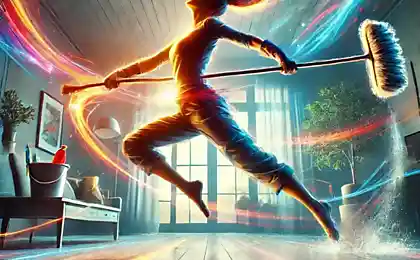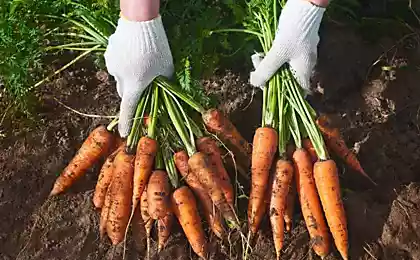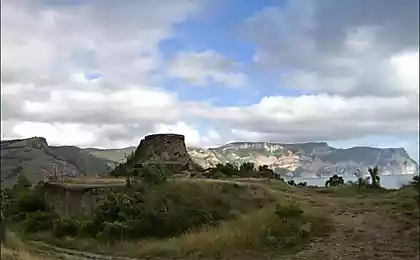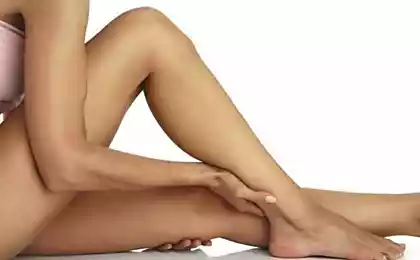197
Why water the battery with boiling water
With the beginning of summer stuffiness, I like to wash all the windows in the house. At once it becomes easier to breathe, and the apartment is transformed. And, of course, old heating batteries need to be cleaned at the same time. Dust accumulates quickly there, too.

But to do this in my case was not as easy as it initially seemed. Under the openwork grille was found a forest of thin metal plates and the hand between them not to get.

Now I know it's a water heating convector. And we will tell you how it differs from a radiator, what features they have and how to banish dust and dirt from an old heating appliance.
In the late 80s - early 90s, water heating convectors were installed in many houses.

Simple, reliable and lightweight, they took up little space on the wall and improved indoor air circulation.

Their main difference from traditional cast iron, steel and aluminum radiators is the method of heat transfer.

In radiators, the bulk of the heat transferred is from radiation. Because of this, it can be too hot near them, and a little further away - quite cool.

Convectors work a little differently. The main role here is played by the convection process.
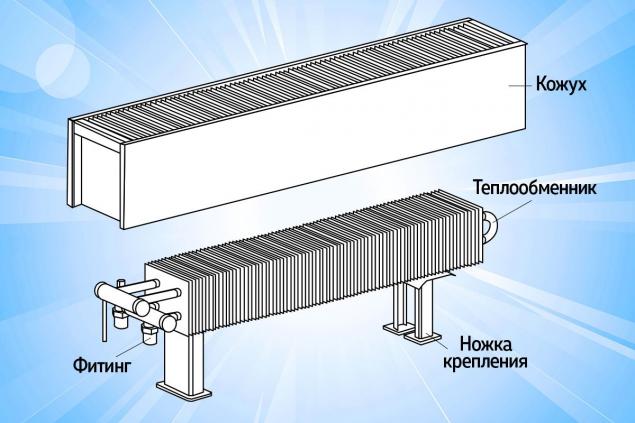
Air passes through the heating elements, increases in volume and rises up, and the vacant place is taken by colder air.

At the same time, heat is quickly and evenly distributed throughout the area of the heated room. In winter, heat consumption decreases by 20-30%. However, due to the peculiarities of the structure in the convectors constantly accumulates dust.
Recently, domestic plants have resumed the production of a wide range of heating convectors.

© Twitter Depending on the configuration, they are divided into wall, floor (lower and wider) and embedded.
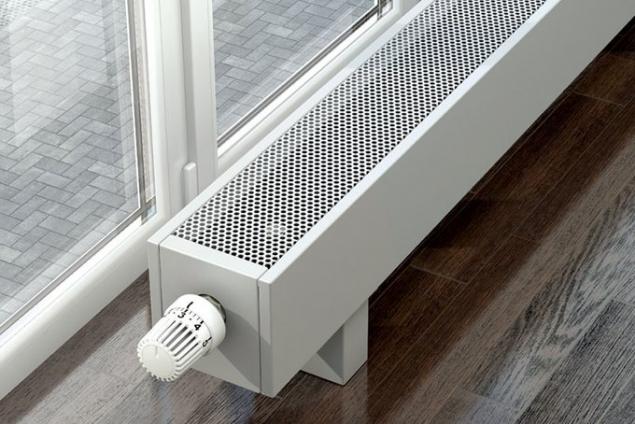
© Twitter The latter are designed to be installed in the floor. Being in the lower part of the room, they fully use the principle of convection.
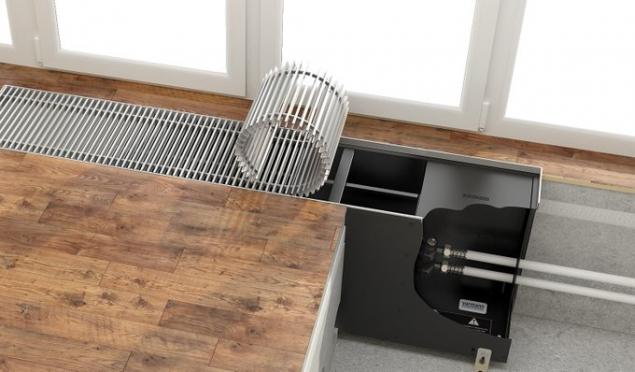
This allows you to effectively heat the air in front of, for example, large panoramic windows.
The decorative lattice panel, which is located on top, is usually easily removed. It can be washed with an ordinary cloth with any soap solution. I usually use household soap. But the radiator itself is more difficult.

Part of the garbage from the radiator can be removed vacuum cleaner. It will take time, but 100% of the result does not guarantee.
You can try to clean with a cloth, or a special brush (on the Internet it is advised to take a brush for bottles). But it is very difficult to clean between metal plates perfectly, there is still some dirt and dust.
Through trial and error, I developed the following algorithm. First, I spray the radiator with detergent. Then I put a long flower tray under it. In addition, rub an old towel around to avoid a flood.
I take a kettle with boiling water and thoroughly water the battery with boiling water. Boiling water removes old dirt faster. After it, you can walk again with a rag, and the dirt is already easier to lag behind. This is especially felt in the kitchen, where a greasy plaque is added to the dust.
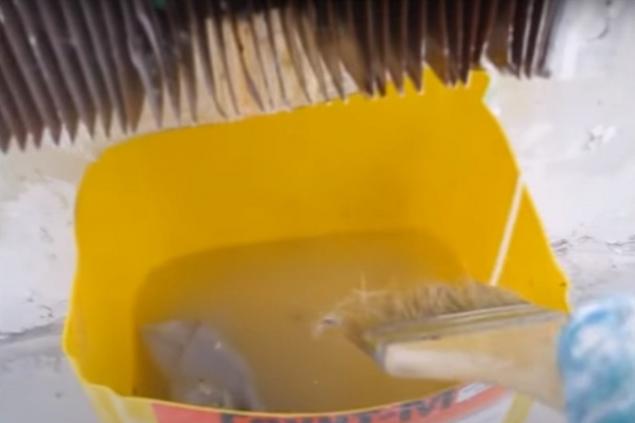
You can also use a brush. The longer the pile, the better.

A good option is a steam cleaner, but not everyone has it, of course. Buying it just to clean the batteries, I don’t know.
I hope you can help someone with cleaning. If you have your own ideas on how to clean the radiator from dust and dirt, share in the comments. Good luck, everyone!

But to do this in my case was not as easy as it initially seemed. Under the openwork grille was found a forest of thin metal plates and the hand between them not to get.

Now I know it's a water heating convector. And we will tell you how it differs from a radiator, what features they have and how to banish dust and dirt from an old heating appliance.
In the late 80s - early 90s, water heating convectors were installed in many houses.

Simple, reliable and lightweight, they took up little space on the wall and improved indoor air circulation.

Their main difference from traditional cast iron, steel and aluminum radiators is the method of heat transfer.

In radiators, the bulk of the heat transferred is from radiation. Because of this, it can be too hot near them, and a little further away - quite cool.

Convectors work a little differently. The main role here is played by the convection process.

Air passes through the heating elements, increases in volume and rises up, and the vacant place is taken by colder air.

At the same time, heat is quickly and evenly distributed throughout the area of the heated room. In winter, heat consumption decreases by 20-30%. However, due to the peculiarities of the structure in the convectors constantly accumulates dust.
Recently, domestic plants have resumed the production of a wide range of heating convectors.

© Twitter Depending on the configuration, they are divided into wall, floor (lower and wider) and embedded.

© Twitter The latter are designed to be installed in the floor. Being in the lower part of the room, they fully use the principle of convection.

This allows you to effectively heat the air in front of, for example, large panoramic windows.
The decorative lattice panel, which is located on top, is usually easily removed. It can be washed with an ordinary cloth with any soap solution. I usually use household soap. But the radiator itself is more difficult.

Part of the garbage from the radiator can be removed vacuum cleaner. It will take time, but 100% of the result does not guarantee.
You can try to clean with a cloth, or a special brush (on the Internet it is advised to take a brush for bottles). But it is very difficult to clean between metal plates perfectly, there is still some dirt and dust.
Through trial and error, I developed the following algorithm. First, I spray the radiator with detergent. Then I put a long flower tray under it. In addition, rub an old towel around to avoid a flood.
I take a kettle with boiling water and thoroughly water the battery with boiling water. Boiling water removes old dirt faster. After it, you can walk again with a rag, and the dirt is already easier to lag behind. This is especially felt in the kitchen, where a greasy plaque is added to the dust.

You can also use a brush. The longer the pile, the better.

A good option is a steam cleaner, but not everyone has it, of course. Buying it just to clean the batteries, I don’t know.
I hope you can help someone with cleaning. If you have your own ideas on how to clean the radiator from dust and dirt, share in the comments. Good luck, everyone!
Home fertilizer for the garden and how to make it without financial investments
The chamber can be replaced by a tube in the bleeding







